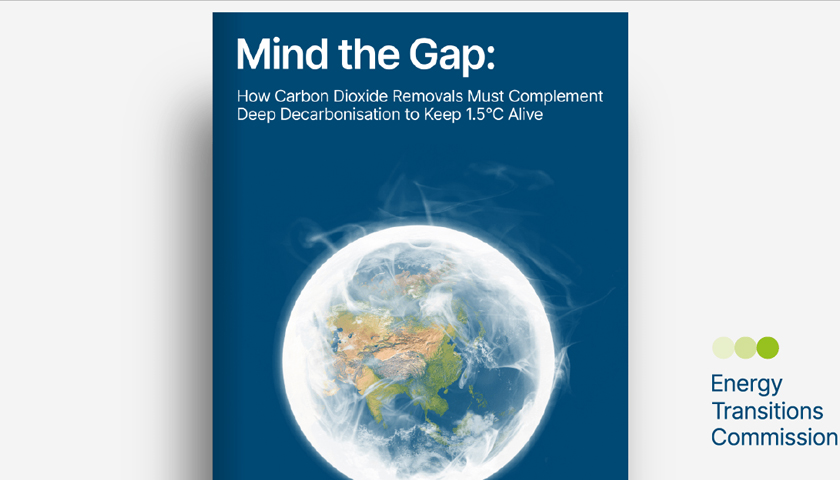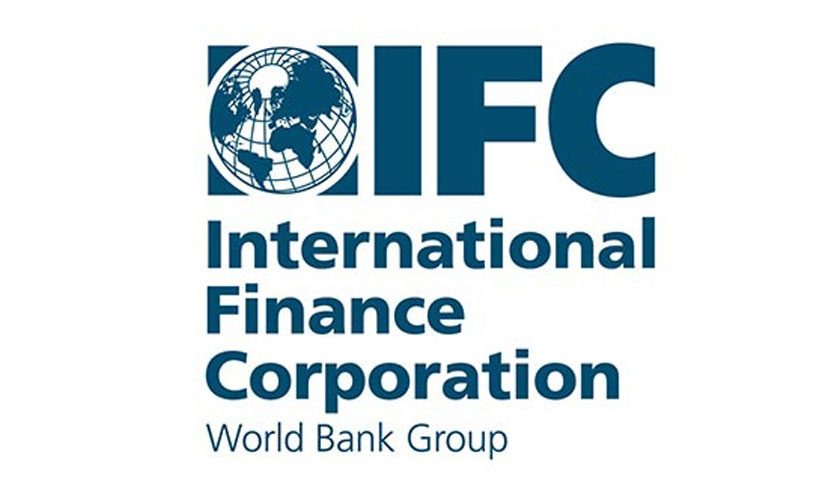In its latest report, Mind the Gap: How Carbon Dioxide Removals Must Complement Deep Decarbonisation to Keep 1.5°C Alive, the Energy Transitions Commission (ETC), describes how carbon dioxide removals (CDR) alongside rapid and deep global decarbonisation can give the world a 50/50 chance of limiting global warming to 1.5°C.
The report confirms that all sectors of the economy can and must decarbonise by mid-century with big emission reductions in the 2020s. Cutting coal use by half and ending 70% of deforestation by 2030 are particularly important priorities. But even given the fastest feasible path of emissions reductions, the world will need at least 70 to 220 Gt of carbon removals between now and 2050 to limit cumulative net emissions to a level compatible with globally agreed climate objectives.
These removals could be achieved via a combination of Natural Climate Solutions (such as reforestation and improved soil management), Engineered solutions (for instance using direct air capture of CO2) and hybrid solutions (such as Bioenergy plus carbon capture and storage). NCS solutions will dominate in the early years but carry measurement and permanent risks which must be carefully managed; Engineered solutions are currently far more expensive, but costs can and must be reduced over time.
A feasible scenario suggests that from close to zero today, removals could reach 3.5 Gt per annum by 2030 and could deliver around 165 Gt of cumulative sequestration over the next 30 years.
A portfolio approach to CDR
No single CDR solution can be deployed in significant enough volumes to deliver the emissions removals required, and each entails different costs and risks. A portfolio approach is therefore required, with solutions playing vital and complementary roles.
Initially the bulk of investment must be focused on reforestation and delivering other NCS, alongside early scale-up support for engineered and hybrid solutions. In the 2030s and 2040s the portfolio is likely to shift towards hybrid and engineered solutions as these newer technologies scale, bringing down costs and increasing availability.
Closing the Gap
Removals will only occur if someone pays for them. A massive ramp up of financial support from both governments and corporates is needed to scale removals in the coming decades. Currently funding for emissions removal is very limited, less than $10 billion per year, with the voluntary carbon markets delivering just 10 megatons (Mt) per year of emissions removals. This is equivalent to less than 0.1% of global emissions.
“Unless we develop carbon dioxide removals rapidly and on large scale – closing the gap in both ambition and funding between today’s minimal level and what we need – it will be impossible to limit global warming to 1.5°C. It’s not either or – deep decarbonisation or carbon dioxide removals. Both are essential, rapidly and at scale, if we are to avoid enormous harm to people across the world” urged Adair Turner, Chair, Energy Transitions Commission.
Supporting c. 3.5 Gt/ year of removals in 2030 could require annual payments of over $200 billion / year. Over the next three decades sequestering 165 Gt could require payments of around $15 trillion, equivalent to around 0.25% of projected global GDP over this period. In contrast required investment in clean power is around 1.5% of GDP over the same period.
Government and Corporate Action
Voluntary carbon markets will play an important role in scaling up CDR but even under ambitious projections are only likely to meet 1/3 of 2030 volume required. Further action will be required with governments supporting via market creation (e.g., emissions trading schemes), via direct finance and purchase of removals, and by redirecting agricultural subsidies and funding of nature restoration.
In turn corporates should support by meeting their obligations in compliance markets (e.g., EU Emissions Trading Scheme). In addition, high ambition corporates should choose to commit to 1.5°C degree aligned science-based pathways to reduce emissions, with any remaining emissions fully neutralized via carbon credits. Crucially, the type of carbon credits corporates purchase should shift away from today’s focus on emissions reductions, towards removals.
Working together government and corporates can create the enabling conditions for CDR. Specifically, building supporting infrastructure (e.g., renewable power, CCSU), accelerating innovation (e.g. enhanced weathering), and delivering training in areas such as improved land management practices. In addition, risk should be managed by governments and regulators investing in monitoring and verification technologies, and standardising best-practices.
Nigel Topping, UK High Level Climate Action Champion, said “In addition to rapid and deep decarbonisation, governments and corporates must work together, starting now, to scale-up an ambitious and diverse portfolio of CDR solutions. As we look ahead to COP27, this is vital to delivering on commitments made in Glasgow and keeping 1.5°C alive.”
The Mind the Gap: How Carbon Dioxide Removals Must Complement Deep Decarbonisation to Keep 1.5°C Alive report constitutes a collective view of the Energy Transitions Commission. Members of the ETC endorse the general thrust of the arguments made in this report but should not be taken as agreeing with every finding or recommendation. The institutions with which the Commissioners are affiliated have not been asked to formally endorse the report.



